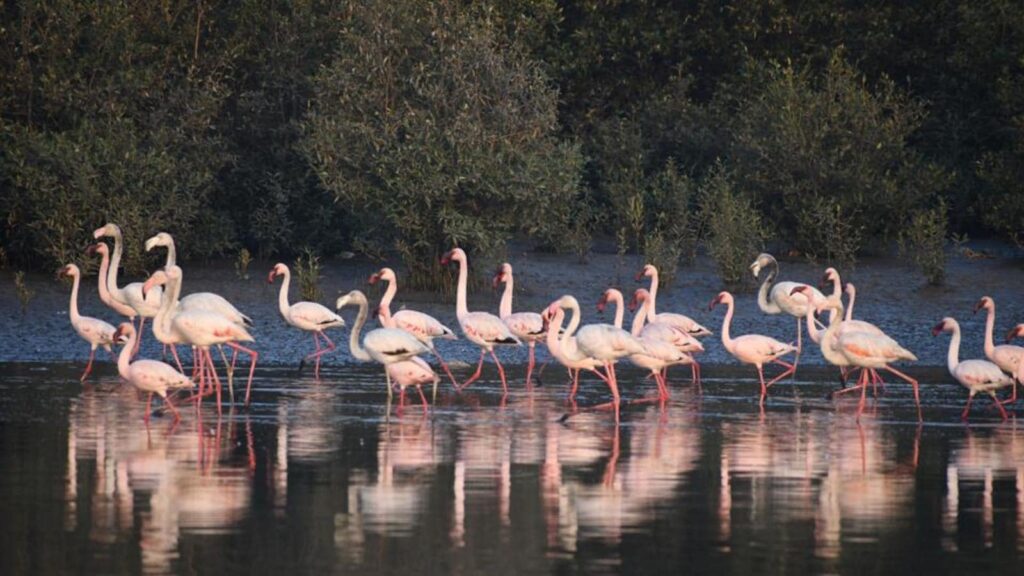Flamingo’s in Mumbai for the first time!!
Flamingos are indigenous to Florida, and the other two species are indigenous to Africa, Asia, and Europe. And now they’ve been spotted in Mumbai, which is a very crowded and loud city, much like the one portrayed in Flamingos, The main reasons for the presence of flamingos are tidal water and flora. Now, the Bombay Natural History Society (BNHS) is planning to radio collar ten flamingos from Thane Creek in January. This is being done to investigate the impact of the Mumbai-Trans Harbour Link construction on bird biodiversity (MTHL). This is their first radio-telemetry research on migrating birds, according to them.
Researchers confirmed that the union telecom ministry’s awaiting licenses, which had been expected for several months, had lately been received.
“We will be tagging roughly nine to ten flamingoes with radio collars, maybe next month,” said Dr. Mrugank Prabhu, a principal researcher on the project. It’s been put off for at least a year.

We’ll start by testing on a small number of birds to see what sort of data we collect because this is the first time we’re doing something like this in Mumbai. “
The study’s three main goals were highlighted by the researchers.
First, they’re attempting to determine the true size of the creek’s flamingo population, which is estimated to number between 100,000 and 150,000 each year. The second step is to evaluate the food supply and distribution in the creek’s intertidal mudflats. The final step is to figure out where the birds migrate.
A total of 39 birds have been tagged with aluminum rings displaying unique ID numbers in the creek. In the last two years, two birds tagged in Mumbai have been followed to Tamil Nadu and Rajasthan.
Dr. Prabhu continued, “It would be interesting to map the travels of the birds arriving at Thane Creek.”Birds from Israel, regions of Africa, Kazakhstan, and Iran are also arriving in lesser numbers. The route that the birds take to reach Thane Creek will be very interesting to map. Where do they come to a halt? How long do you think it will take them to arrive? How long are they going to be here? We’ll be able to better answer these queries thanks to real-time geo-tagged data, “Prabhu said. The initiative could be expanded to include more flamingos and other water birds that reside in and around Thane Creek in the future.
The BNHS study, which began in 2017, will be completed in 2027. It’s significant because there hasn’t been much research on flamingos and the ecology of Thane Creek so far. The ongoing research will serve as the foundation for a regional conservation plan for avian biodiversity, which was one of the conditions imposed by the Union environment ministry, without which the MTHL would not have received the mandatory environmental clearance (EC) required to begin construction.
The MTHL’s straight passage across the Sewri-Mahul mudflats, which provide habitat for up to 15% of the near-threatened lesser flamingo (Phoeniconaias minor) population in South Asia, has been a major source of opposition from environmentalists. The BNHS proposed that this segment be rerouted in its preliminary study, but the state government rejected the recommendation.






